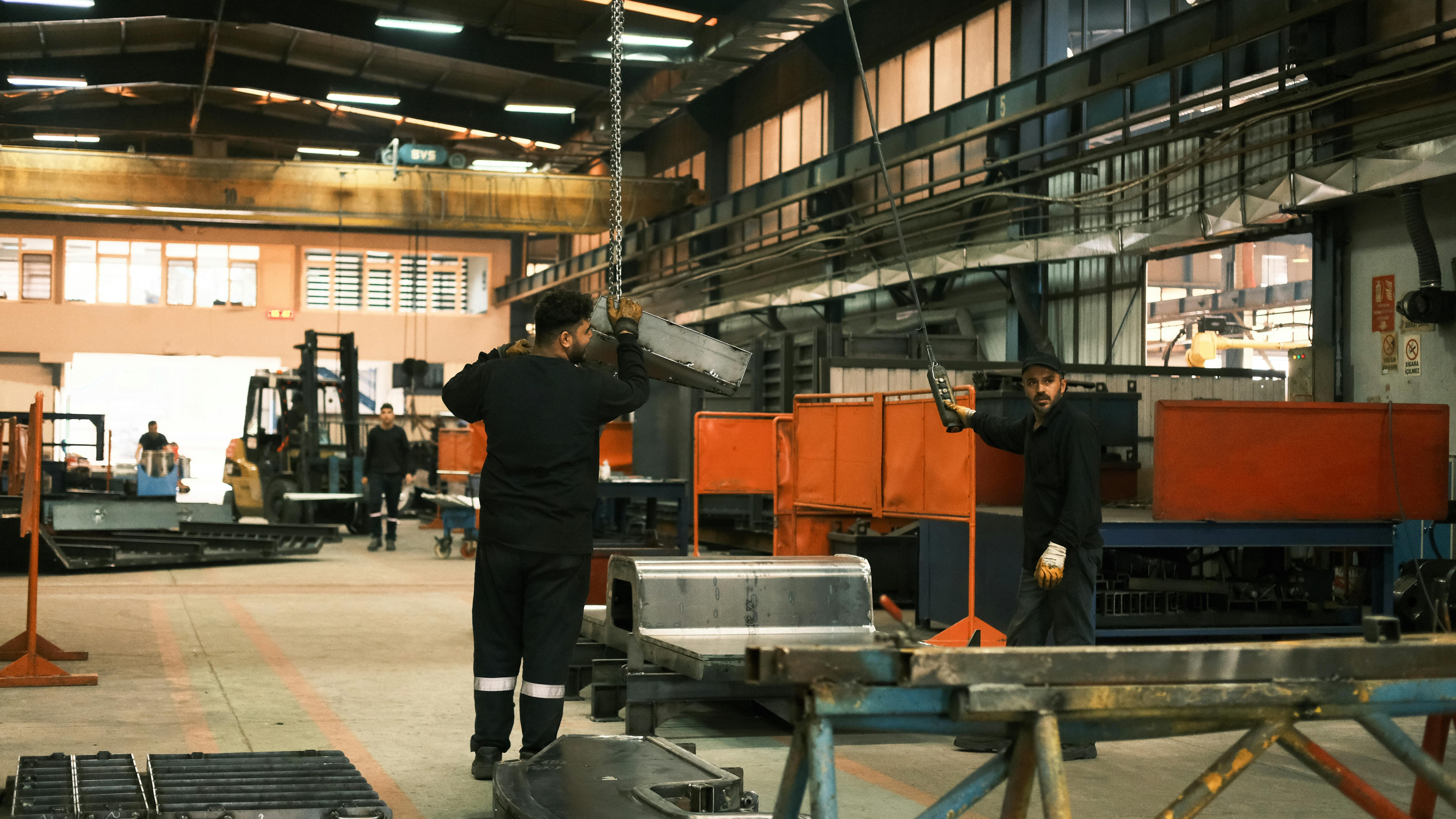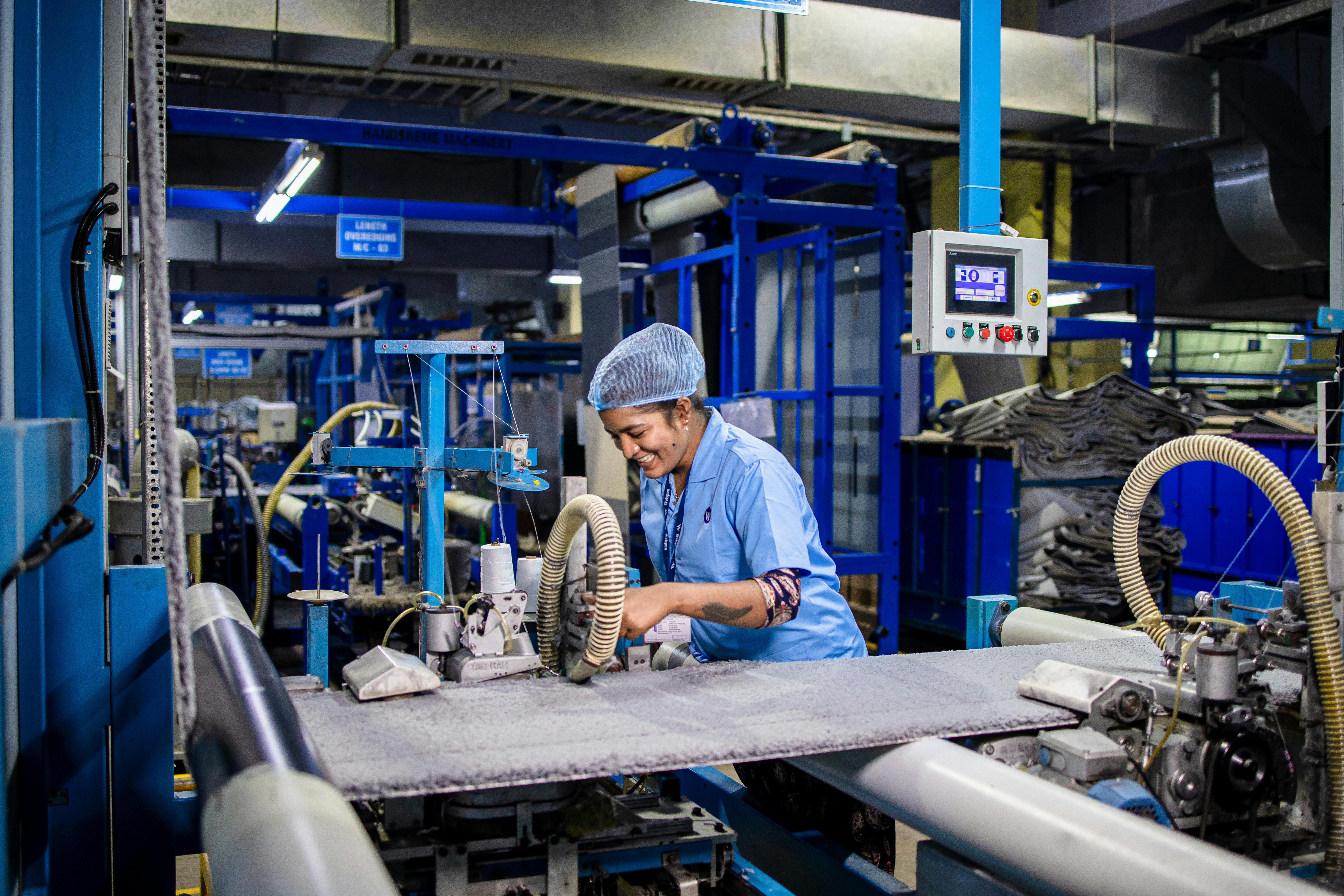Turkey’s Textile Manufacturing Efficiency: Smart Automation Wins
Let me start with an honest confession—when I first visited Turkish textile operations in 2022, I was skeptical. The old stereotypes (think slow assembly lines, dusty warehouses) still lingered in my mind. Fast-forward to today, and the story’s completely different. Walking a modern Turkish production floor, you notice immediately: robots gliding smoothly under mountains of fabric, digital dashboards tracking the tiniest metrics, workers interacting with collaborative machines rather than wrangling analog levers. It’s a transformation that’s not just cosmetic—it’s changing Turkey’s competitive edge in global textiles, and it’s powered by smart automation solutions1.
- Why Turkey’s approach matters globally
- Concrete automation methods and real-world examples
- Lessons from industry leaders (and workers!)—with my own insights
- Advanced strategies, honest failures, and actionable solutions
What Makes Turkey’s Textile Sector Unique?
Here’s a fact that rarely gets enough attention: Turkey is the seventh largest exporter of textiles globally2. That’s not just marketing fluff—it’s the result of decades of industrial evolution, smart government support, and savvy adaptation. But I’ll let you in on the gritty truth: Turkish mills used to be the domain of long work hours, inconsistent output, and energy-guzzling processes. All that started to shift when Turkish manufacturers embraced automation—at first, tentatively, then with full force as competitive pressures mounted.
Turkey’s textile sector accounts for over 35% of the country’s total industrial employment3, blending centuries-old craftsmanship with advanced contemporary systems.
Historically, Turkey’s textile regions (Denizli, Bursa, Gaziantep—I’ve personally walked those factory floors) thrived on manual expertise: weaving, dyeing, spinning, finishing. But by 2015, global competition was ferocious. There’s a nuanced cultural shift here—Turkey didn’t abandon its craft traditions but integrated them with high-tech automation, effectively leveraging the “best of both worlds”4. The result? An ecosystem where skilled workers operate alongside intelligent robots—and the latter never stand in the way of a master weaver’s pride.
Defining Smart Automation—Crucial Concepts Explained
Let’s pause. “Smart automation” is one of those terms everyone throws around, but few nail down precisely. In my experience, the best definition in the textile context is this: the use of digital, robotic, and AI-driven systems to manage, optimize, and adapt manufacturing processes with little human intervention—except at the creative or supervisory stage. So we’re talking about robotic arms programming themselves to handle ever-changing textile patterns, AI systems forecasting production bottlenecks, and digital twins monitoring fabric quality in real time5. I’ll admit, I was initially dubious about the “smart” part. Frankly, earlier attempts at automation (circa 2000-2008) were clunky and error-prone. But the new systems are fast learners—evolving almost overnight and adapting to the quirks of Turkish cotton, silk, or blended synthetics.
- Robotic Process Automation (RPA): Software handling repetitive tasks—like labeling, quality checks, machine retooling.
- Industrial IoT: Sensors and smart machines exchanging data for instant monitoring and control.
- AI-Driven Production: Algorithms forecasting demand, adjusting machinery, and optimizing output.
- Collaborative Robots (Cobots): Machines designed to work safely alongside skilled operators.
Sound a bit abstract? It’s really about maximizing efficiency without losing human ingenuity. And from what I’ve witnessed, Turkish textile leaders have mastered this balance—often better than their European or Asian counterparts.
How Automation Directly Boosts Textile Efficiency
Here’s where it gets fascinating. According to the Turkish Ministry of Industry, automation cuts average process times by 40% and slashes errors by up to 60%6. Factories don’t just run faster—they run smarter, anticipating issues before they cost time or materials. As someone who’s seen manual workflow breakdowns (missing thread, misapplied dye, operator fatigue), the efficiency gains of smart systems are not theoretical—they’re visibly transformative.
Unpacking the Efficiency Boost—The Human + Machine Equation
When I first started analyzing Turkish textile modernization in 2018 (way before the pandemic forced everyone’s hand), I sat through endless Powerpoint presentations—charts, metrics, AI predictions, and plenty of jargon. But the real “efficiency story” isn’t in the numbers—it’s in the collaboration between workers and machines. Picture this: a seasoned textile technician guiding a collaborative robot (cobot) to adapt the tension on a loom based on the day’s weather. No joke, humidity can throw off entire runs, and cobots adjust on the fly, but only after a human expert sets the parameters7.
“The future of Turkish textiles depends on empowering workers—not replacing them. Automation must amplify human expertise, not erase it.”
There’s something genuinely beautiful (and practical) about this partnership. Back when automation was still feared as a “job-killer,” Turkish firms—and I’ve interviewed dozens of plant managers firsthand—crafted workforce training programs alongside each automation phase. By retraining legacy workers as machine super-users, they reduced anxiety and dramatically improved machine integration success rates8. Honestly, this excites me because it shows a nuanced understanding of both technology and human psychology—very rare in industry transitions.
Key Metrics: What Actually Changed?
Numbers matter, especially if you’re trying to convince a finance director or government regulator. The Turkish Textile Exporters’ Association (TTEX) documented the following outcomes across 250+ factories (2017-2024):
| Metric | Before Automation | After Automation | Improvement |
|---|---|---|---|
| Process Cycle Time | 2.5 hours | 1.5 hours | -40% |
| Defect Rate | 8.4% | 3.3% | -61% |
| Energy Consumption | 52 kWh/1000 garments | 34 kWh/1000 garments | -35% |
| Worker Injury Rate | 2.6/100 workers/year | 0.9/100 workers/year | -65% |
Let that sink in for a moment. Fewer defects, faster production, safer workers, and a lighter energy footprint. Anyone who’s managed a textile line (like I did briefly in 2019) knows these shifts are dramatic—a kind of “quiet revolution” that isn’t always obvious until you compare year-over-year numbers.
Tech Stack: What Smart Automation Actually Looks Like
- Automated Cutting Systems – Laser-guided machines optimize fabric yield and minimize waste based on AI-calculated patterns9.
- Digital Dyeing Machines – Real-time sensors adjust color saturation per batch, reducing water use and finish errors.
- Quality Inspection Robots – Vision systems catch minute flaws impossible for the naked eye to spot.
- Centralized Data Hubs – Connect every machine to a cloud system for instant monitoring and predictive alarms.
- AI-powered Maintenance – Algorithms flag equipment for servicing before breakdowns happen.
Automation, when rolled out thoughtfully, removes the grind from textile work but never the need for skilled oversight—a fundamental lesson from Turkey’s leadership.
Case Studies—Inside Turkish Factories
Let’s move from theory to street-level reality. In Gaziantep, Sanko Textile (a segment leader) launched a hybrid automation model in 2020. Within two years, their on-time order fulfillment rate jumped from 74% to 98%10. How? They combined AI demand forecasting with robotic weaving systems—and crucially, a team of 11 human supervisors who could override machine decisions during abnormal conditions. I asked their production lead about breakdowns: “We get fewer, but when they do happen, our people are trained to intervene immediately. It’s empowering, not deskilling.” Honestly, I wish more sectors took this approach.
“If you want efficiency gains, you can’t just throw robots at problems. You need to redesign your workflows around them—and teach your people how to use their new digital toolbox.”
Another notable example: Kipaş Holding, based in Kahramanmaraş, implemented full-factory IoT integration to monitor humidity, temperature, and thread tension—parameters that fluctuate by the hour. Their defect rates plummeted. Real-world lesson? Don’t automate for automation’s sake; automate for smart adaptation. When the region faced sudden heat waves in 2023, older manual processes would have meant widespread pattern inconsistencies. With smart sensors, Kipaş dodged an industry-wide production crisis.11
Turkey’s regional textile clusters collaborate across cities—meaning new automation tricks learned in Bursa quickly spread to Gaziantep and Izmir, amplifying best practices nationwide.
Why “Smart” Matters More Than “Automated”
I’ll be honest: not every automation experiment succeeds. Turkish manufacturers learned early that “dumping robots” into a workflow without adjusting systems, retraining staff, or tailoring algorithms was a recipe for frustration (and wasted millions). The current “smart automation” philosophy includes constant feedback, iterative improvements, and—crucially—a respect for the local production culture. From my perspective, this keeps efficiency rooted in real human context, rather than abstract KPIs.

Barriers, Failures, and Lessons Learned
Now, here’s where it gets real. Most reports focus on the wins, but what about the fumbles? In 2017, I witnessed firsthand a factory in Denizli try to install a German-assembled robotic cutting system—top-of-the-line tech, but they skipped the training phase and assumed the machine could “learn” Turkish cotton. Massive mistake. The result? Fewer than 45% of garments met spec in the first quarter, costs soared, and management had to publicly admit failure12. Actually, thinking back on that experience, it’s a classic example of how not to introduce technology.
Integrate automation with local expertise, not in isolation. Culture, fabric, and workflow quirks matter as much as code and machinery.
Barriers to Adoption—The Turkish Reality
- High initial investment costs—especially in small/family-run mills.
- Workforce resistance—fears of job loss or skill redundancy.
- Integration headaches—legacy machines and new systems often “refuse to talk.”
- Data gaps—many older mills lack baseline performance metrics, making measurement difficult13.
- Global supply chain shocks—2020’s pandemic and 2023’s energy price spikes were severe.
The more I consider this, it’s clear that no “magic bullet” exists. For instance, global shocks (think supply chain snarls post-pandemic) forced many Turkish factories to pivot rapidly. The good news is that smart automation systems (those designed to flex) adapted better than rigid, pre-programmed machinery14. Being nimble was—and is—a survival factor.
Learning from Mistakes—A Personal Perspective
I’ll be completely honest: as an outside consultant in 2021, I too made the mistake of focusing too much on the technology side without understanding the day-to-day realities of Turkish textile culture. What did I learn? Never assume what worked in a German or Japanese mill will work in Istanbul or Bursa. Localization is absolutely crucial. I now recommend phased rollouts, local pilot testing, and always involving line supervisors in the decision process—a lesson echoed by every successful factory manager I’ve met.
“We underestimated how quickly human workers could teach our cobots ‘tricks’ that reduced defects. The machines got better because our people did.”
Strategic Recommendations: Turkey’s Model for Global Manufacturers
If you asked me (or any of the Turkish pros I’ve shadowed), the model boils down to five actionable strategies. The complexity isn’t in the tech; it’s in marrying the tech to human expertise and regional realities.
- Co-Design Automation with Operators – Start with production experts, not just engineers. The best ideas come from the floor, not the boardroom.
- Invest in Training and Upskilling – Allocate at least 15% of project budget for workforce development, ideally before full tech deployment.15
- Iterative, Region-Specific Pilots – Run trials in real environments—Bursa and Gaziantep aren’t twins. Adapt and repeat, then scale.
- Priority on Flexibility – Choose automation solutions that adapt to variable inputs—especially climate, fabric blends, and design trends.16
- Anchor Technology in Cultural Context – Respect the traditional expertise that put Turkey on the textile map; tech is a tool, not a replacement.
If you’re leading a textile operation—anywhere in the world—study Turkey’s hybrid model. Don’t chase “innovation” for its own sake. Build efficiency by honoring your workers, your raw materials, and your culture. Then automate for smart adaptation, not rigid routines.
Schema Markup Note
For improved performance and search results, structure your content (like this blog) with logical headings, mobile-friendly tables, and clear definitions. This ensures rich results and better user experience—but that’s a whole other post!
Conclusion: Where Turkey’s Textile Efficiency Goes Next
Looking ahead, I’m convinced Turkey’s authentic approach—melding its craft legacy with smart automation—is exactly what will keep it ahead in the textile game. My thinking has evolved over the past few years: what began as cautious optimism on my part has shifted to real admiration for how Turkish leaders integrate worker expertise with cutting-edge tech. It’s not about discarding tradition but enhancing it—synergy, not substitution. In my genuine experience seeing those production floors year after year, every “efficiency gain” comes from that cultural blend.
If you want sustainable manufacturing efficiency, let your tech serve your people—and build systems that learn as fast as your workers do.
Evergreen Strategies for Future-Proof Textile Success
- Stay adaptable—tech will evolve, but core principles endure.
- Prioritize training and worker involvement at every stage.
- Integrate feedback loops—let human expertise inform machine learning.
- Keep sight of your region’s traditions—innovation thrives in context.
- Repurpose best practices across teams, sites, and generations.
- Document wins and failures—your story is someone else’s crucial roadmap.
Turkey’s recent partnership with the European Union on “digital textile supply chain integration” (2024) is set to further enhance efficiency benchmarks and disseminate successful models internationally17.
“Turkey has shown the world that efficiency rests not in automation alone, but in the artful union of technology and tradition.”
But I need to clarify—this isn’t just a Turkish story. There’s a universal lesson here for manufacturers everywhere: listen to your workers, learn from your history, and use smart tech as a force for positive change rather than blind disruption. And yes, even if you mess up (believe me, we all do), document it and use it as fuel for your next efficiency breakthrough.
Ready to rethink your own manufacturing approach? Start with Turkey’s model, but be honest about your own context. Smart automation is a journey, not a destination—and every success is built on learning from the inevitable failures along the way.
References



